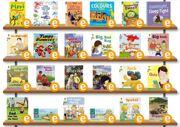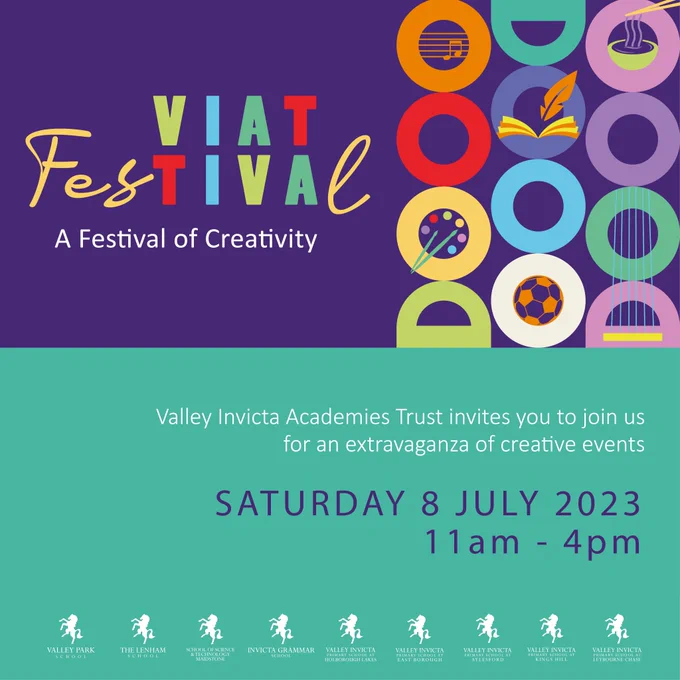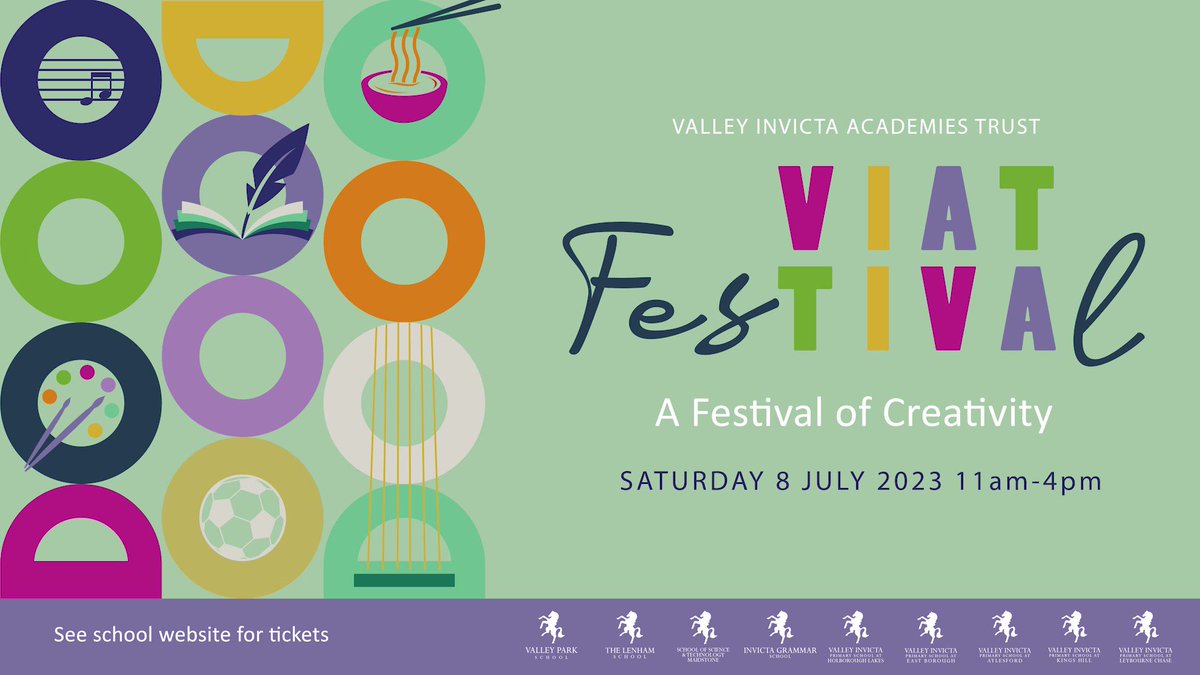Download our FREE smartphone app today!
Phonics

Read Write Inc. Phonics (R.W.I.)
At Valley Invicta Primary School at Holborough Lakes we use Read, Write, Inc. an inclusive synthetic phonic programme to teach our children to read, to write and to spell. We have adopted this as our whole school approach as the programme facilitates a graduated and tailored approach to learning basic sounds and letter formation before advancing to more complex sounds and reading for comprehension. The programme moves with integrity from learning to read to reading to learn.
R.W.I. sessions occur each day as the continuity and pace of the programme is key to accelerating the progress of children’s reading development. This method of phonics teaching is both systematic and repetitive in order to embed learning; the programme also offers plenty of opportunities for fun-based, interactive learning using drama, role play and props to engage with and to enjoy texts and stories. The children work in small groups according to their confidence and competence. These groups are reconfigured on a regular basis in order to match the pace and the progress of each child; this reconfiguration also allows Class Teachers to identify where 1:1 interventions may be required in order to meet the expectations of both the Phonics Check and the end of Key Stage 1.
For further information please visit the Read Write Inc. website:
Oxford Owl for Home: help your child learn at home - Oxford Owl
RWI Book Progression Expectation
Aims and Objectives
The overarching objectives of the RWI programme are to teach pupils to:
- apply the skill of blending phonemes in order to read words.
- segment words into their constituent phonemes in order to spell words.
- learn that blending and segmenting words are reversible processes.
- read high frequency words that do not conform to regular phonic patterns.
- read texts and words that are within their phonic capabilities as early as possible.
- decode texts effortlessly so that their focus can be used on reading to learn (comprehension)
- spell effortlessly so that their focus can be directed towards the composition of their writing
Teaching and Learning Style
The core principles of the programme are;
- Praise – Pupils learn quickly in a positive climate.
- Pace – Good pace is essential to the lesson.
- Purpose – Every part of the lesson has a specific purpose.
- Passion –It is the energy, enthusiasm and passion that teachers invest into lessons that bring the teaching and learning to life!
- Participation - A strong feature of R.W.I. lessons is partner work; partners ‘teaching’ each other (based on research which states that we learn 70% of what we talk about with our partner and 90% of what we teach).
Nonsense words (Alien words)
As well as learning to read and to blend real words, the children meet “Nonsense words.” These words present an opportunity to assess a child’s ability to decode using phonics. Children who can read non-words should have the skills to decode almost any unfamiliar word. Nonsense words will also feature in the Year 1 Phonics Screening check in the summer term.
What is the Phonics Screening Check?
The national Phonics Screening Check was introduced in 2012 to all Year 1 pupils. It is a short, statutory assessment to ensure that children are making sufficient progress in the phonics skills to read words and are on track to become fluent readers who can enjoy reading for pleasure and for learning.
Useful websites/links for parents
Please find below some websites that you may find useful in helping you and your child to learn about phonics.
http://www.ictgames.com/literacy.html
Read Write Inc. Phonics: Ruth Miskin on how to teach blending to children - YouTube
OXFORD OWL ebook Library for Parents
Welcome to the eBook Library
The Oxford Reading Tree free eBook library has been created to help children aged 3–11 to develop their reading skills at home.
All the eBooks are free to use, but you will need to register or sign in at the link below to read your book.
(Please note, eBooks are not optimised for mobile phones and are best viewed on a computer, laptop, or tablet.)
Free eBook library | Oxford Owl from Oxford University Press

What children learn at primary school | Oxford Owl
Useful documents for parents
Speed Sounds Set 1
Learning Set 1 Speed Sounds
These are the Set 1 Speed Sounds written with one letter:
m a s d t i n p g o c k u b f e l h r j v y w z x
These are the sounds written with two letters (your child will call these ‘special friends’):
sh th ch qu ng nk ck
Check if your child can read these sounds. Make sure they say sounds like ‘mmm’, not letter names like ‘em’. Watch the Sound Pronunciation Guide video to help you.
You can help your child practise the Speed Sounds they have learnt with the Speed Sounds practice sheets (please click the klink and scroll further down the page.)
Learning to blend with Set 1 Speed Sounds
Your child is learning to read words containing Set 1 Speed Sounds by sound blending. For example:
m-a-t mat
c-a-t cat
g-o-t got
f-i-sh fish
s-p-o-t spotb-e-s-t best
s-p-l-a-sh splash.
If your child is learning to sound blend, watch the Sound Blending video for tips on how to support them.
Speed Sounds Set 2
Learning set 2 Speed Sounds
These are the Set 2 Speed Sounds:
ay ee igh ow (as in blow) oo (as in zoo)
oo (as in look) ar or air ir ou (as in out) oy
Check if your child can read these sounds.
If your child is learning the Set 2 Speed Sounds, you could help them to:
- Complete the Speed Sounds practice sheets for the Speed Sounds they have learnt.(Please clcike the link and scroll further down the page)
- Read these free eBooks at Red Ditty level, then Green level and then Purple level, in order. We recommend children read each eBook three times, as they would at school: once to read the words correctly, a second time with more fluency, and a third time in a ‘storyteller voice’ that shows their understanding.
Speed Sounds Set 3
Learning set 3 Speed Sounds
These are Set 3 Speed Sounds:
ea (as in tea)
oi (as in spoil)
a–e (as in cake)
i–e (as in smile)
o–e (as in home)
u–e (as in huge)
aw (as in yawn)
are (as in care)
ur (as in nurse)
er (as in letter)
ow (as in brown)
ai (as in snail)
oa (as in goat)
ew (as in chew)
ire (as in fire)
ear (as in hear)
ure (as in pure)
Check if your child can read these sounds.
If your child is learning Set 3 Speed Sounds, you could help them to:
- Complete the Speed Sounds practice sheets (Click on the link and scroll further down the page) for the Speed Sounds they have learnt.
- Read the eBooks at Pink level, then Orange level and then Yellow level, in order. We recommend children read each eBook three times, as they would at school: once to read the words correctly, a second time with more fluency, and a third time in a ‘storyteller voice’ that shows their understanding.
Reading Books with Set 1,2 and 3 Speed Sounds
If your child has learnt all three sets of Speed Sounds, they need to practise them and read books with words made up of those sounds. They could:
- Complete the Speed Sounds practice sheets for the Set 3 Speed Sounds. (Please click on the link and scroll furtehr down the page).
- Read the eBooks at the Blue level and then the Grey level, in order. We recommend children read each eBook three times, as they would at school: once to read the words correctly, a second time with more fluency, and a third time in a ‘storyteller voice’ that shows their understanding.























